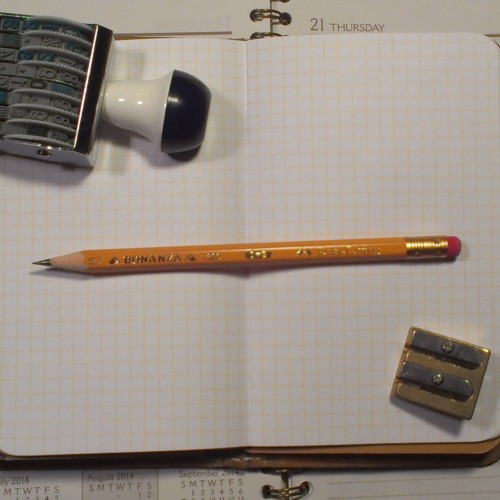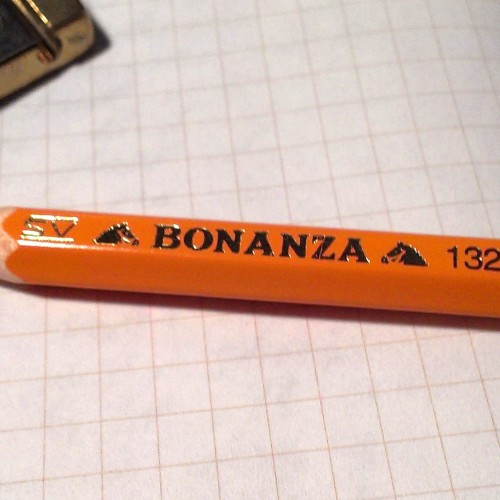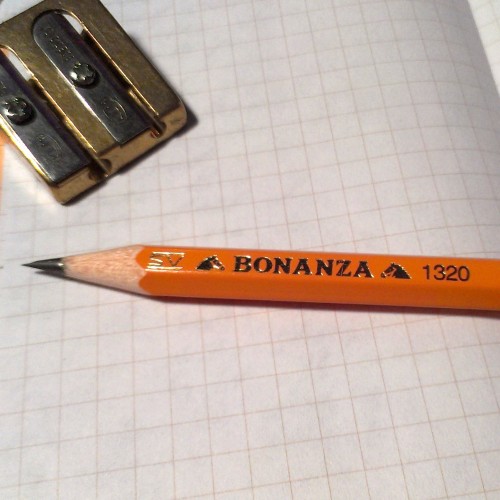Welcome to the first guest post on Comfortable Shoes Studio! I’ve asked some of my friends to write posts for the blog to introduce new voices. Big thanks to Hahna for kicking off the series! You can interact with Hahna via Facebook in the RSVP Podcast group!
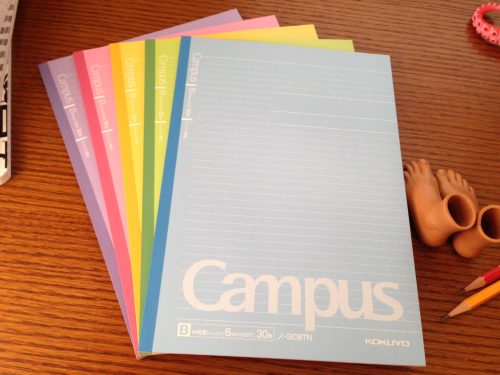
A set of Kokuyo Campus Notebooks, Todai Series.
I never gave composition notebooks (comp books) much thought before I started reading Less’ reviews. Didn’t use them much, but I do feel nostalgic when I see them. They feel Very American with their no-nonsense stitching and the sturdy, 5-foot thick plywood covers that some sport. Seems like they were field-tested and made to survive handling from jocks who could care less. The empty class schedules, multiplication tables and grammar rules often printed on the insides also somehow seem hopeful and encouraging, as if the designers and companies are doing what they can to help kids get through their days.
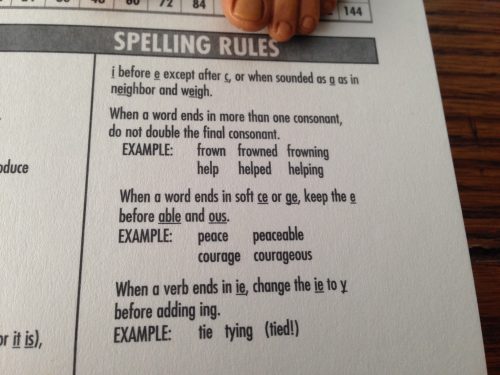
i before e except after c, or when sounded as a as in neighbor and weigh.
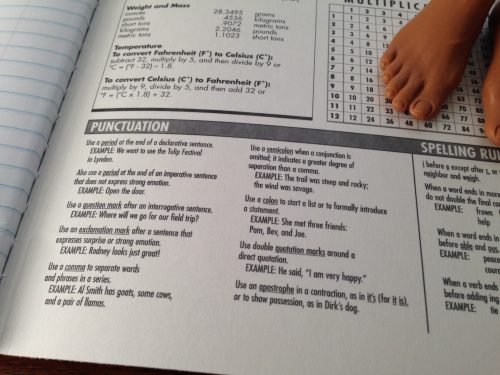
To convert Celsius (C) for Fahrenheit (F): multiply by 9, divide by 5, and then add 32 or F = (C x 1.8) + 32.
Me, I tended to use crappy spirals or perforated glue bound books, but I also used a whole slew of asian stationery store notebooks, mostly for the My Melody covers. Though many were spiral bound, the ones I preferred to use were glue bound books. They were mostly B5 size, which is 250 x 177 mm. B5 is just a tad taller and a tad narrower than the standard American comp books which are 9.75X7.5 inches or 247×190 mm.
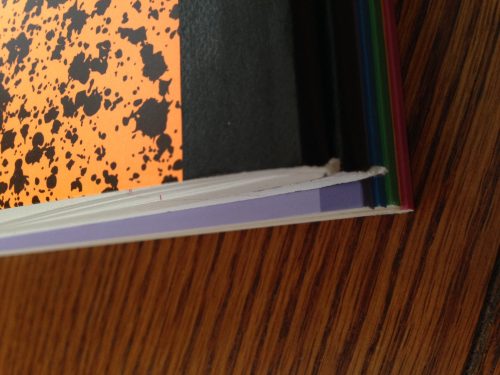
The B5 notebooks (purple) are a tad taller than the American comp book (orange).
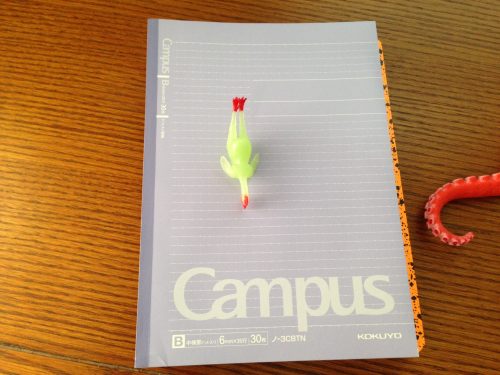
The B5 notebooks (purple) are a tad narrower than the American comp book (orange).
B5 books are also usually thinner, with around 30 sheets per book, but sometimes they have more, up to 100 sheets. Comp books, meanwhile, generally have 70-100 sheets. Asian books are often glue bound, with no threads on the inside, but spiral books are also common.
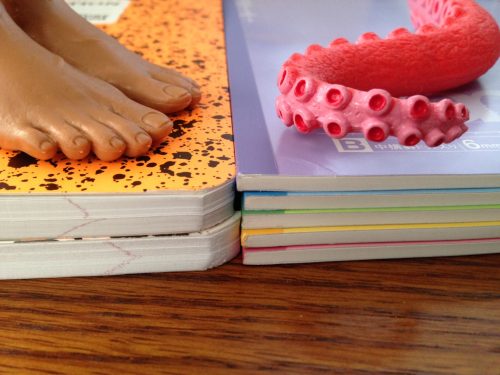
Here two standard comp books (total 200 sheets, to the left) are stacked up next to five standard B5 notebooks (total 150 sheets, to the right).
Asian B5 books have thin and flexible cardstock for covers and inside they are ruled in a single color, most often at either 6mm or 7mm. They also don’t have margin lines and I don’t think any ever have schedule grids, grammar rules or tables of any sort.

Typical ruling in a B5 book. No red margins in sight.
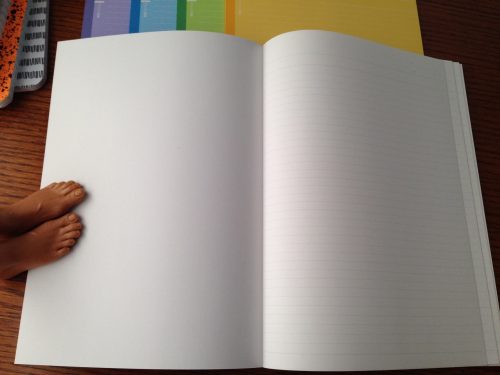
Inside front and back covers are blank with no helpful multiplication tables.
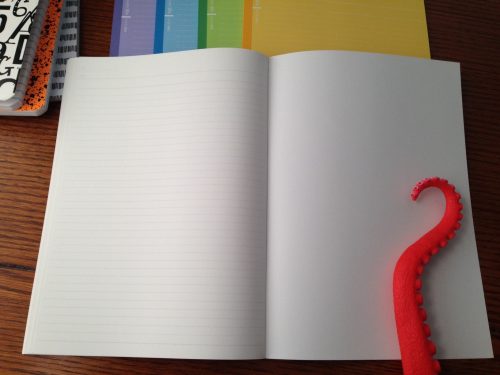
Inside back cover, also stark white. Ready for anything.
Comp books are hard (impossible?) to find in Korea, and I imagine that the B5s fill the void. Like comp books, they are everywhere and come in a range of quality and price. Lot of competition in the B5 notebook arena, but some of the most popular are the Kokuyo Campus notebooks.

Kokuyo Campus Notebooks, Todai Series. What’s shown is sold as a set of five 30-sheet books in the following colors: purple, blue, green, yellow and red.
Campus notebooks come in standard 6 mm or 7 mm rulings but here we have the Todai Series which features something slightly fancier than just plain rules: rules with tiny dots evenly spaced along the rule. So not reticle, not dot graph, not graph and not grid + lines. It’s dotted rule, or graph lite, as I like to think of it. The lines and dots are a faint grey and unobtrusive when you write on it but are easy enough to see when you need them. I love it. But for those purists who think the dots are just too fancy for them, Kokuyo still offers plain ruled books as well, so fret not!
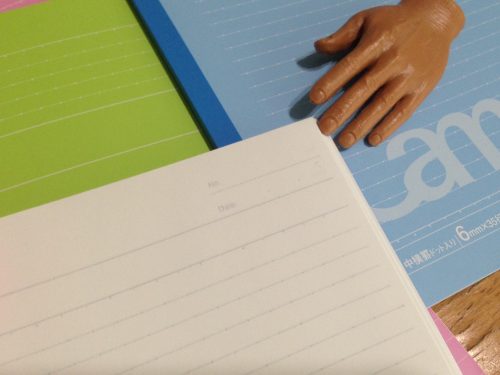
A close up of the dotted rule; it is also reflected in the design of the covers.
The Campus notebooks are ok paper for pens. The papers are slightly thinnish and with some pens there is just a teeeeny tiny bit of ghosting. I think most people would use both sides. Some ink pens might not allow it. Luckily for me, though, I love my pencils and you can’t see pencil writing at all on the other side. Yay for pencils!
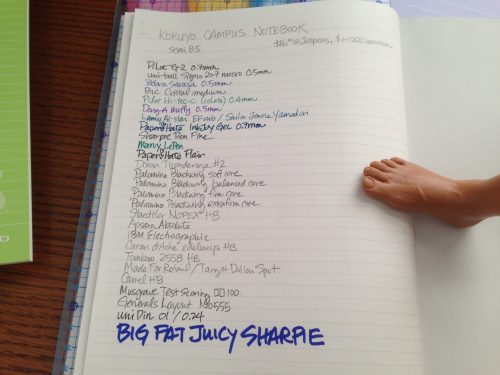
A small sample of pens, pencils and markers.
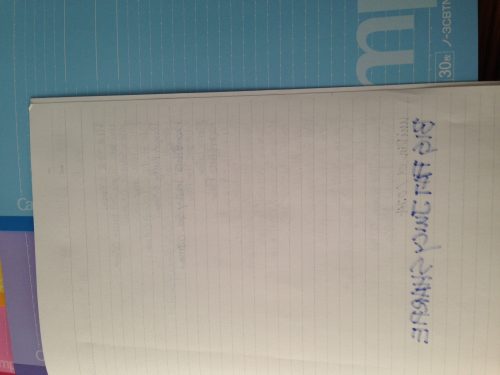
The teeeeeniest bit of ghosting.
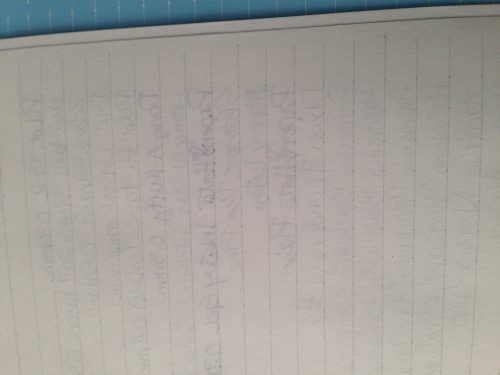
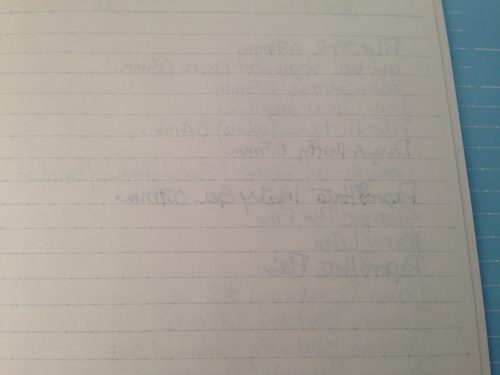
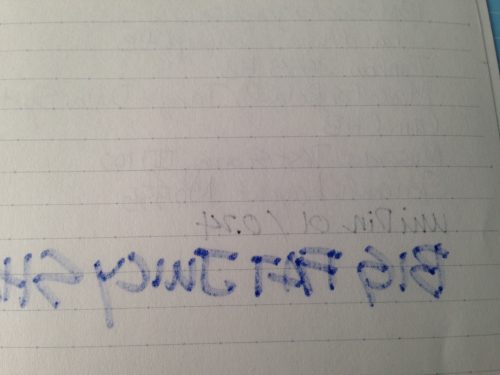
Don’t use sharpies in the Campus books, unless it’s an emergency.
I love how discreet and slim the Campuses are; you aren’t committed to the usual 70-100 sheets per book like you are with American comp books.
I’ve talked a lot of love for Campus, haven’t I? There are a few cons. First, they don’t completely lie flat, especially the first and last pages. But I think that the pages lie extremely flat in between.
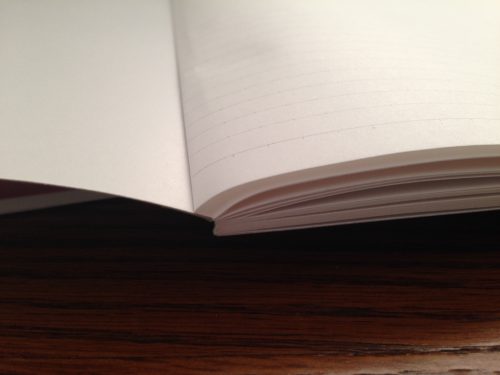
First page opened.
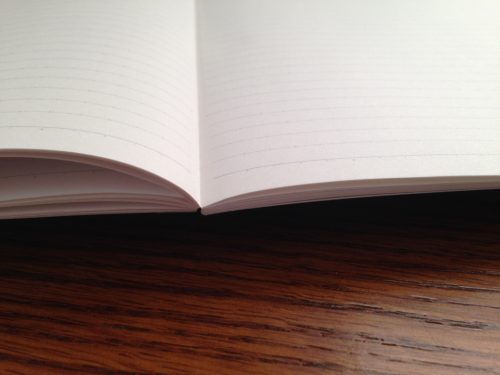
Pages in the middle lie pretty flat.
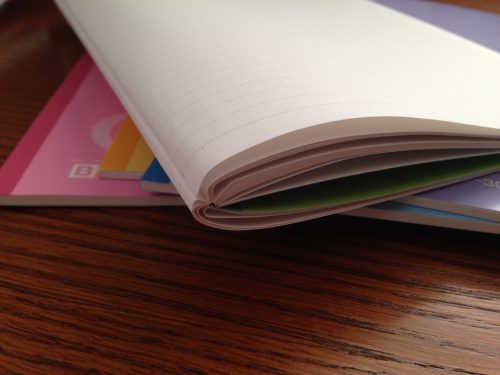
Book abused and folded over completely. Poor little fellow.
Also, I think that the glue is a big turn off for many people.
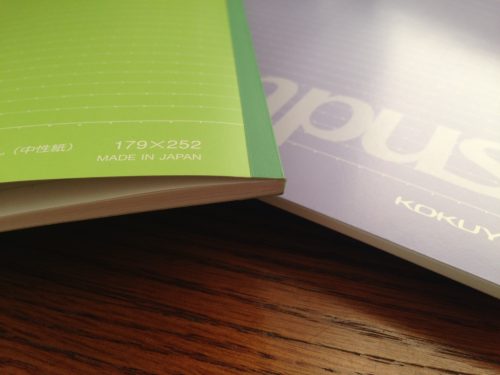
Glued spine! I love it and yes, glue turns me on.
Another minus: Kokuyo Campus books are $16.50 on JetPens per pack of 5 or $11 for the same 5 pack on amazon. I know that in Korea, a single Campus notebook sells for around USD $1, so its definitely the importing that’s making them so pricey. There’s a range in pricing to American comp books ($0.50-3.00+ for one), but you can find a decent one of 100 sheets for $1, or 1 cent per sheet. Campus books are going to be 7 – 11 cents per sheet in America.
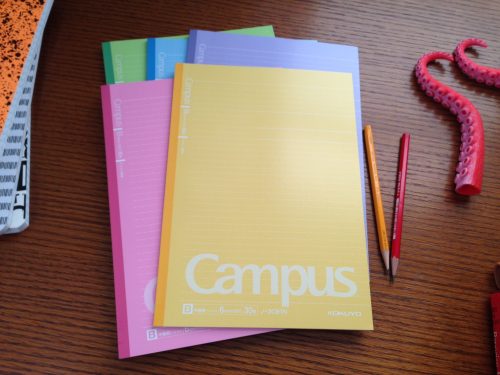
All this can be yours for between $11 and $16.50.
Still, $16.50 for a five pack of notebooks isn’t ridiculous in the stationery world, where nerds regularly shell out $12 for 3 pocket notebooks. So here at Chez Hahna, we still get ’em.
So there you have it, an overview of Kokuyo’s Campus Notebooks. Why don’t you try a pack? They’re my favorite! 
My happy place.
hahna lives in rural Illinois and is still trying to figure out what to be when she grows up.
